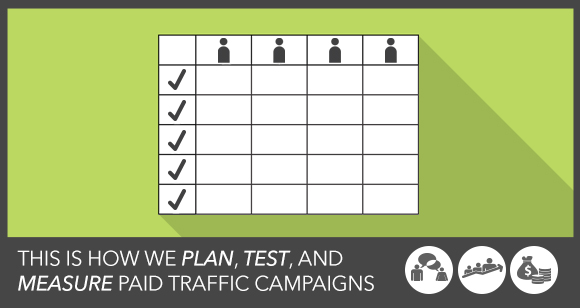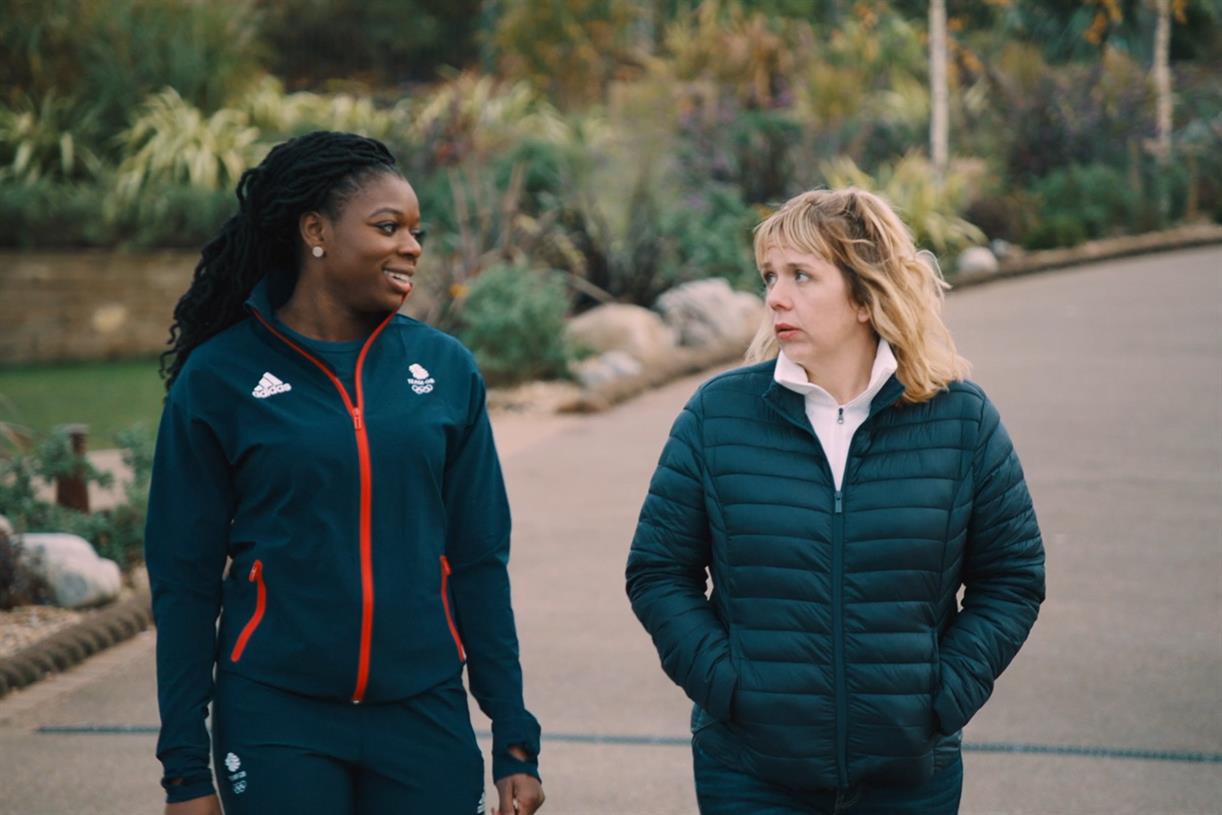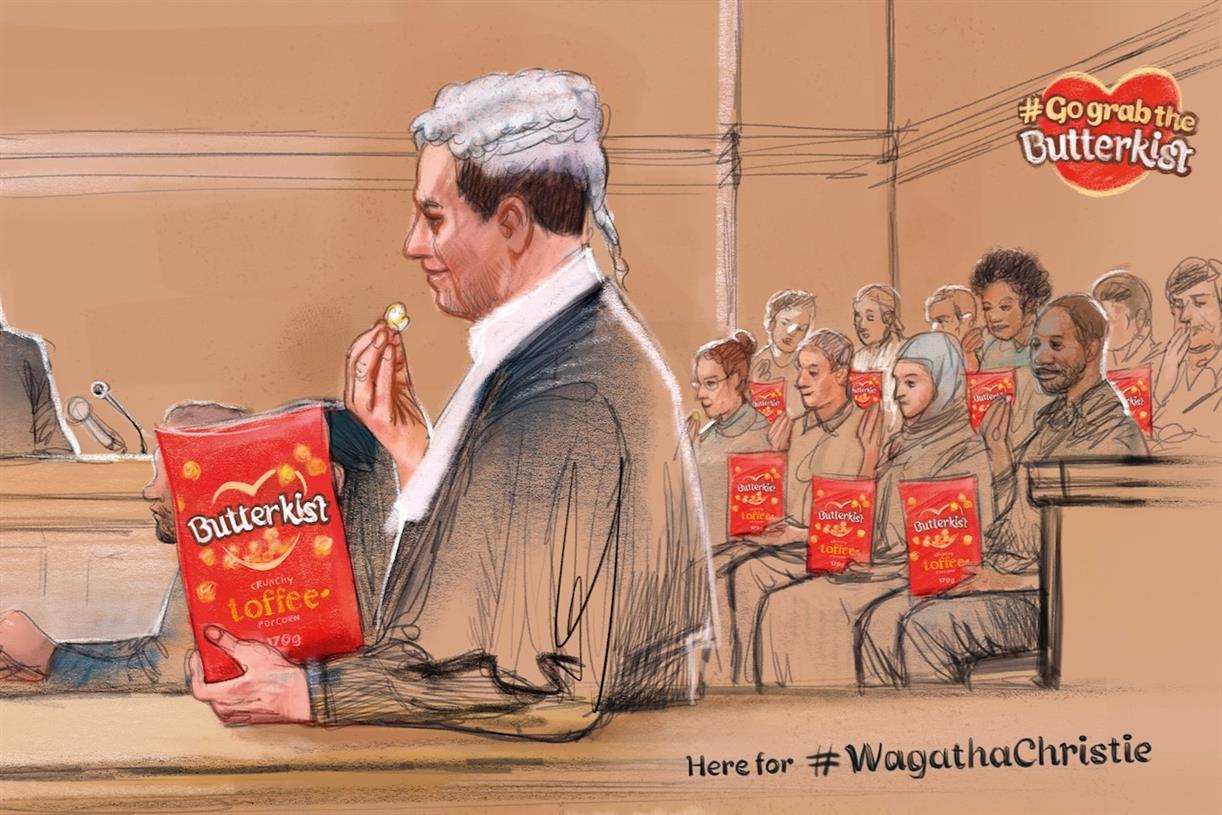The Ad Grid: How to Build Traffic Campaigns that Convert Higher and Scale Faster
Use DigitalMarketer's 7-step system for building traffic campaigns across any platform that convert higher and scale faster, and see success 20x over. The post The Ad Grid: How to Build Traffic Campaigns that Convert Higher and Scale Faster appeared...

The Ad Grid is the method DigitalMarketer uses to increase our ad success rate 20 times over.
It’s how we plan, test, and measure paid traffic campaigns. It’s the way we organize and systemize our traffic strategy.
The Ad Grid takes the guess work out of creating an ad campaign.
It looks like this:
But, the Ad Grid is much more than a spreadsheet… the real power is the process that goes along with the grid.
Systemizing a strategic process is tough. Systemizing the creation of an entire traffic campaign is nearly impossible. But, after 3 years, we’ve developed a 7-step system we’ll share with you today.
At DigitalMarketer, we follow this 7-Step Plan no matter the product or the traffic platform because it works.
The Ad Grid is applicable to ANY business OR traffic platform.
Today, you’ll get all our inside details on the Ad Grid including, but not limited to…
Even better — we’re showing you a real campaign we launched at DigitalMarketer using this exact 7-step strategy. You’ll get the Avatars, the Hooks, the copy — everything.
Let’s first talk about the trap you’re susceptible to falling into if you’re not utilizing the Ad Grid. It’s one we’ve fallen into plenty, and one we want you to avoid. It’s…
The Dreaded One-Hit Wonder Campaign
One-hit wonder campaigns come about when marketers just make ads.
But there’s a problem with just making ads. It leaves you open to creating “one-off” ad campaigns without a system or a plan.
The one-hit wonder, if you will.
One-hit wonder campaigns usually target one or 2 different audiences, may test a few different images or copy variations, and that’s pretty much it…
…the person on the other side of the computer expects to launch this type of traffic campaign and BAM… sales and leads will start pouring in.
But, most of the time they don’t. And, if they do… the campaign is only successful for a few days or weeks.
Then, said person complains… “FACEBOOK ADS DON’T WORK,” or “XYZ TRAFFIC PLATFORM DOESN’T SCALE.”
What they don’t realize is that they’re creating one-hit wonder campaigns. They’re only giving themselves 1 or 2 chances to sell their offer.
Well, what if those 1 or 2 copy variations still don’t resonate with the audience? What if those 1 or 2 targeting groups aren’t actually people who are interested in what you’re talking about?
The campaign will fail.
Most people quit after this happens. But, you shouldn’t.
You should use the Ad Grid, and give yourself a foundation for success… and 20+ different chances at success, not just one.
One-off campaigns are bad because:
Let’s take a look at these mistakes, so you can be sure that you don’t make them:
One-off campaigns don’t reflect the customer journey.
You want to build a relationship with your customer like you would in person.
You’re looking to make friends.
Does it make sense to immediately ask someone you’re hoping to become friends with for money?
No.
But that’s exactly what some marketers are doing with their ads. They’re putting an ad in front of their target audience and saying, “Hi, nice to meet you! Buy this product! You’ll love it!”
But why should someone buy? They don’t know your brand from Adam.
Like all relationships in life, the brand needs to give value first. And that goes beyond the customer getting ABC product or DEF service.
One-off ads usually have low relevance/quality scores.
That means the audience isn’t resonating with the ads. The ad is repelling prospects, they’re not taking the action that you optimized your campaign for, or worse – they’re marking it as spam.
Why does this happen? Because you’re not speaking to the right audience, you don’t have market to message match in your ad copy, or you’re trying to sell to someone before they’re ready.
The next time the audience sees an ad from you, they’ll probably cringe and think, “Those guys.”
One-off ads aren’t scalable.
In the past, we found ourselves launching campaigns that broke the rules I outlined above. These campaigns weren’t scalable.
Not that there was anything wrong with these Facebook ads, they were successful in terms of ROI.
But, there were only a few ad variations within them. And they didn’t always work…
We found 80% of these ads failed, especially on Facebook. That’s the nature of traffic. Sometimes you swing and miss.
If you’re only setting one or 2 ads, and you’re only testing one or 2 audiences, you’re essentially putting all of our eggs in one basket.
And, we realized that’s what we were doing. We weren’t giving ourselves the ability to scale campaigns in the way we needed to grow our business. We were limiting ourselves.
One-off ad campaigns typically don’t have market to message match.
That means the ad is TOO BROAD.
Ads that don’t have market to message match are essentially talking to a large group of people and offering them a one-size-fits-all package/solution.
For the ad to be successful, it needs to have a specific offer that speaks to a specific group of people.
So how do you keep from making these mistakes? You deploy the Ad Grid.
The Ad Grid Process
The Ad Grid will help create a honed in marketing strategy, so you can stop wasting time and money.
It’s important to keep in mind that you’re going to create an Ad Grid for every offer you roll out.
When you create an Ad Grid, focus on the “offer” that’s the entry point for the funnel.
For those of you who are unfamiliar with the funnel, ask yourself:
Knowing where your customer enters the funnel will give you a better understanding of how to target them. Should you target them with a blog post? A Lead Magnet? A low-dollar offer?
The example that we’ll use for this particular post is a recent Lead Magnet we created here at DigitalMarketer called the 10-Minute Social Media Audit.
This audit allows you to assess the performance of your social media strategy or the strategy of your competitors. It gives you an actual “grade” and reveals opportunities for improvements where you could generate more followers, traffic, and/or make more money from your social efforts.
The Ad Grid Steps
Let’s get right into the steps so you can start putting this to work in your traffic campaigns!
Make sure to download the PDF version of this infographic for easy reference and even more resources.
The Ad Grid Step 1: Identify Your Avatars (Specific to the Offer)
You’ll start by creating an Avatar.
An Avatar is a profile of a person who would be interested in your message. The Avatar is a target audience.
Keep in mind when you’re filling out your Ad Grid, the Avatars aren’t necessarily the same Avatars you’ve set for your business as a whole. Your Business Avatars are going to be much broader than the Avatars that would be interested in this particular offer.
You need to create a SPECIFIC Avatar for each ad offer. You do this through research.
(To get more specific on who you’re targeting in your business, check out our worksheet for creating your Customer Avatar.)
Identify Avatars for the specific offer you’re running traffic to by doing intensive research on Amazon, Google, forums, etc. to figure out WHO these people are and what their pain points may be (the problem(s) they’re looking to solve).
Identify your Avatars, and place them across the top of the Ad Grid on the X Axis.
(Don’t force yourself to add 4 Avatars just because I have 4 in this example, just ensure that you have 2+ identified, or you lose the power of the Grid.)
Think about who would be interested in this particular offer? What different groups of people can you speak to? How are they different?
For example, with the 10-Minute Social Media Audit, we chose:
Step 2: Identify the Hooks
The Hook is the “marketing message.” The WHY that makes people want to take you up on your offer.
If your offer is missing a Hook, you’re going to have a hard time getting people to take you up on whatever you’re asking them to do.
You need to explain the benefits – the value – of your offer, in order to “sell” it.
So how do you come up with a Hook that conveys value?
Here are the 6 different ways we think about Hooks…
Have
If the customer takes this offer, what will they HAVE that they didn’t before? Think of it as Before and After.
(RELATED: How to Create and Market a Killer Offer)
Feel
How will the customer FEEL once they take your offer? Will they FEEL smarter or more confident, will they be pain free and FEEL better?
Average Day
How will your offer improve their AVERAGE DAY? What mundane task does your offer improve? How does your offer save them time or energy on a day-to-day basis?
Status
How does the customer’s STATUS change once they’ve consumed your offer? How are you helping elevating their status?
Proof/Results
This one is the most common.
Use reports or case studies to demonstrate PROOF or RESULTS that the customer could experience with your offer. This can create SOCIAL PROOF.
For example, part of your ad copy could include, “Join the thousands of people who have already benefited!” Or, explain actual results that have occurred because of your offer.
Speed & Automation
With SPEED, you speak to the QUICKNESS of the offer — how will this thing speed up a part of their life or AUTOMATE a task? For example, this razor will save 10 minutes of your day.
Get started, and see what Hook(s) work best to promote your offer. You can combine Hooks, as well.
If you don’t already have ideas in mind for why your offer is “sexy” it may be time to revisit the offer in general.
Place your Hooks on the Y Axis of the Grid.
For example, with the 10-Minute Social Media Audit, we chose:
The 10-Minute Hook
This is a broader Hook, and in the past this probably would have been the ONLY Hook we would’ve used to promote this offer.
This Hook speaks to speed and results:
Take 10 minutes to audit your Social Media Strategy and as a result get more followers, drive more traffic, and increase engagement.
The “Get A Grade” Hook
Most people like to self-analyze.
Most people like to take quizzes/tests to see where they stand. We were conditioned to respond to grades in school. The fact that the 10 Minute Social Media Audit gives you a “grade” is a Hook all in its own.
Create a Report Hook
This Lead Magnet isn’t just an audit.
It’s a document that you could use as a report to track social media progress over time. It can be used as an internal document.
Grade Your Competition Hook
Most people like to spy on their competition.
This Hook is all about grading your competition, too, and seeing where your social media strategy stacks up against theirs.
Know Your Goals Hook
This Hook is about aligning your social media strategy with your overall business goals.
Are you using a social strategy that actually has an effect on your business? Is your social strategy in line with the goals you’ve set as a company?
As you can see, there’s a fair bit of “marketing” that goes into creating your Hooks.
You have to sit down and really think… what is ATTRACTIVE about your offer? What are different ways I can “sell” this offer?
Most of your Hooks are going to flop — and that’s fine! Testing multiple Hooks gives you room for error… you never know what people are actually going to respond to until you test it.
Step 3: Write Your Copy
This is where the magic starts to happen.
At this stage, you’ll create copy that has a congruent market to message match.
How?
Write specific ad copy for each block on the Grid. This will force you to write copy that corresponds to BOTH the Avatar and the Hook.
This will help you create powerful, segmented ads that will speak to a particular Avatar using a particular Hook instead of writing a broad ad that will miss.
Depending on the traffic platform, the length and type of copy will vary.
Think about why a particular Hook would appeal to a particular Avatar?
For example, with the “Get a Grade” Hook… the Social Media Manager would care about getting a grade because they want to self-assess, and maybe they want to take their “good” grade to their boss in order to get a raise.
But why would the boss care about the “Get a Grade” Hook? They want a way to assess their Social Media Manager… a way to show progress (or lack thereof), a way to measure their success.
Writing this amount of copy is time consuming, but it will give you the assets you need to run a full fledged campaign.
Below you’ll see Facebook ad copy that we wrote for this offer:
(You can expand this image in a new window for better viewing here.)
(You can expand this image in a new window for better viewing here.)
Step 4: Avatar Research
If you put your campaign in front of the wrong audience, it will fail.
That’s why research is key.
Your Avatar research will become the targeting you use on the ad platform.
What’s important in Step 4 is doing research for each Avatar separately. You’re researching WHERE this particular Avatar would be hanging out on the traffic platform you’ve selected.
If your ad was about social media and you targeted anyone and everyone that’s interested in social media, your ad would be too broad. It wouldn’t be as effective as targeting each Avatar separately.
A marketer needs to look at their Avatars not as a group but as an individual Avatar. Look at them as very separate and different people, because they are.
When researching Avatars, answer these questions…
…and so on.
This Avatar research will become the targeting that you use when you set up your campaigns. If you’re using Facebook, these would be the interests you target; on Twitter the handles you target, etc.
(RELATED: [DOWNLOAD] The Complete Guide to Facebook Ad Targeting)
So, take time to research each Avatar and create lists of possible targeting options. You can place these at the bottom of each column of your grid:
Step 5: Create or Outsource Ad Creatives
Your ad creatives are…
videos pictures graphics, etc.….for your campaign.
The creative you use for each ad will depend on the traffic platform your ad runs on: Video for YouTube, Pictures for Pinterest, etc.
What’s important about the creative is that it depicts your Hook – your marketing message.
You’re going to want to make a creative for EACH Hook.
It’s not about using bright, flashy images anymore… you want to use images that portray the message you’re sending to the audience.
This is a perfect example of a creative that does just that…
We have a process behind coming up with each image…
Each Hook will have keywords or phrases that relate to it.
In Google, do a search query for keywords within your Hook.
You’ll see the top images that are associated with that query, which will give you inspiration for your creative.
Here are the winning ad creatives for each Hook in the 10-Minute Social Audit Campaign:
The “Get A Grade” Hook (to Social Media Managers)

The “Create A Report” Hook (to the Boss)

The “Grade Your Competition” Hook (to the Agency Owner)

The “Know Your Goals” Hook (to the Solopreneur)

Step 6: Compile Your Results
Once you’ve completed your research on your Avatars and Hooks, written your copy and produced your creatives, it’s time to launch your campaign.
After about 5-7 days of running your campaign, start analyzing your results.
Then use the Ad Grid to measure the success of the campaign.
Determine what your success metric for your campaign will be:
This will depend on your business.
(RELATED: Episode 40: 4 Facebook Metrics Critical to Your Success)
Once you know what metric you’ll use, apply it to the Ad Grid. It will give you a visual — you’ll see what’s working for the entire campaign in one glance. This will help you scale.
Here’s what we use at DigitalMarketer to track the performance of our grids:
Step 7: Scale
The best part… it’s time to scale!
You could just beef up a successful campaign’s budget on that particular platform and call it a day…
Or you could go beyond and further your success.
Use the Ad Grid to help you scale.
The Ad Grid shows you which Hooks and Avatars are winners. Scale out to the winners — the Avatars responding to your campaign, the Hooks converting, and the intersections between the 2.
You can see the insights and the data. You can see how to Scale.
Look at what Avatars your campaign worked best for — what Hook(s) they responded to. You can take that information, and apply it across the Web.
What are other platforms does that Avatar “hang out” on?
If you first ran an ad set on Facebook and saw the success you’re looking for, apply the ad to other traffic platforms – like Twitter or email – that are relevant to that Avatar.
Reach out to the Avatar on different platforms with the Hook they responded to.
You’ll also know which Hook(s) failed, so you won’t make the same mistake twice on other platforms – for example, you won’t use failed Hooks for your email list.
The Ad Grid will help you scale in 2 ways:
Putting it All Together
The Ad Grid takes you from creating one ad that targets a broad audience to creating 20 SPECIFIC ads (if you use the 4 Avatars and 4 Hooks model).
You’re giving yourself more chances to hit a home run by creating a fully fleshed out targeting campaign that is more likely to increase your success rate 20 times over.
You also know where to scale beyond just throwing more money at a particular campaign on a particular platform — creating less trial and error and more results.

 AbJimroe
AbJimroe 































